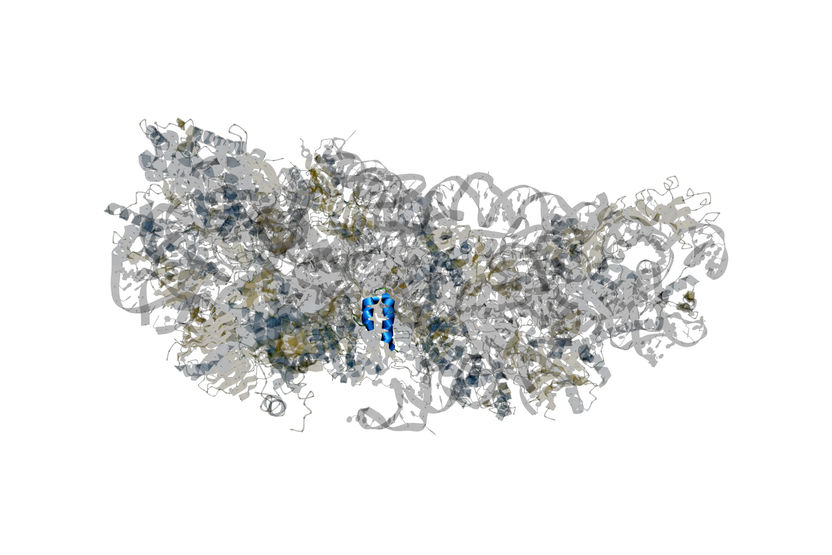Looking at the good vibes of molecules: a new method for label-free metabolic imaging
Label-free dynamic detection of biomolecules is a major challenge in live-cell microscopy. The simultaneous visualization of dynamic alterations for classes of metabolites, such as carbohydrates and lipids, was an unmet need in biomedical research. Now, a novel imaging method developed by a collaborative team from Helmholtz Zentrum München, Technical University of Munich (TUM), and Heidelberg University Hospital will have a major impact on basic understanding, monitoring, prevention, diagnosis, and treatment of metabolic diseases, such as diabetes and obesity.
Metabolic diseases such as diabetes and obesity are ever more common globally. In addition to genetic disposition, lifestyle contributes strongly to the prevalence of these metabolic diseases. Precise monitoring methods are needed in order to, for example, evaluate how a change in diet or exercise affects disease and its metabolic characteristics. Now, a team from the Institute of Biological and Medical Imaging at Helmholtz Zentrum München and at the Chair of Biological Imaging at TranslaTUM at the Technical University of Munich has developed a technique that provides real-time images of biomolecules in living cells – without the need for labels or contrast agents. The evaluation of the imaging system was performed in collaboration with the Institute for Diabetes and Cancer at Helmholtz Zentrum München and the Heidelberg University Hospital.
Sound of light images biomolecules in cells and tissues
With this new technology, called Mid-infraRed Optoacoustic Microscopy, or MiROM for short, the researchers excite “fingerprint”-specific molecular vibrations with mid-infrared lasers. Selective absorption of transient mid-infrared light from different molecules triggers a thermoelastic expansion, i.e. a minute volumetric expansion that generates ultrasound waves. These waves are detected and processed to form an image of the distribution of specific molecules, depending on the wavelength(s) of excitation.
Compared to previous techniques, one outstanding advantage of this new method is that it is no longer limited to dry-fixed samples. By detecting acoustic waves, which pass easily through tissue rather than photons which are strongly absorbed by tissues and water, MiROM provides imaging features from metabolites beyond existing technologies. “MiROM offers a microscopy breakthrough. In conventional mid-IR imaging, higher biomolecule concentration leads to higher signal loss. Conversely, MiROM converts mid-IR imaging to a positive contrast modality, whereby higher concentration yields stronger signals. The technique demonstrated label-free imaging of biomolecules beyond the sensitivity limitations of Raman methods,” explains Prof. Vasilis Ntziachristos, Director of the Institute of Biological and Medical Imaging and of the Chair of Biological Imaging.
A pioneering study that opens a new field in metabolic research
“MiROM provides novel insights into subpopulations of cells over time. Moreover, it enables us to detect not only lipids, but also carbohydrates and proteins in real-time”, says Miguel Pleitez, who led the system development. Label-free imaging of metabolites can impact the ways we study molecular processes associated for example with fat storage and release due to the breakdown of white and brown fat cells, called lipolysis. However, a broader range of metabolic procedures and the interactions of different biomolecules can be studied as well.
Metabolic processes change in association with diabetes, obesity, or alterations of life style conditions including diet and exercise. However, observing many of these processes so far required the use of labels and contrast agents that were laborious and could affect the biological function studied. This new technology can revolutionize metabolism readings: “MiROM offers unique in-vivo label-free observations of metabolic processes in real-time, which can be applied to dynamically study the effects of different diets on the cellular level or evaluate the performance of new classes of drugs”, says Miguel Pleitez. The team is working on a revised version of MiROM with enhanced speed, resolution, and sensitivity to boost discoveries in a broader spectrum of diseases including cancer.
Initial implementations of MiROM as a laboratory microscope demonstrated metabolic imaging in cells and excised tissues. “Our long-term vision is to adapt the technology to enable measurements in humans, so that we can study systemic processes associated with lifestyle changes and optimize disease prevention strategies”, explains Ntziachristos.
Original publication
Other news from the department science
Most read news
More news from our other portals
See the theme worlds for related content
Topic World Cell Analysis
Cell analyse advanced method allows us to explore and understand cells in their many facets. From single cell analysis to flow cytometry and imaging technology, cell analysis provides us with valuable insights into the structure, function and interaction of cells. Whether in medicine, biological research or pharmacology, cell analysis is revolutionizing our understanding of disease, development and treatment options.

Topic World Cell Analysis
Cell analyse advanced method allows us to explore and understand cells in their many facets. From single cell analysis to flow cytometry and imaging technology, cell analysis provides us with valuable insights into the structure, function and interaction of cells. Whether in medicine, biological research or pharmacology, cell analysis is revolutionizing our understanding of disease, development and treatment options.























































